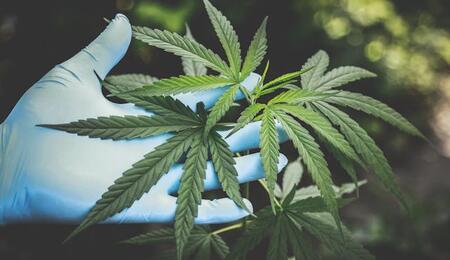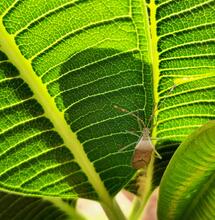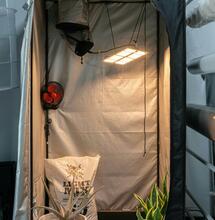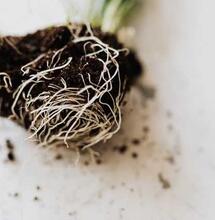Dealing with Thrips in the Grow Room

Thrips, tiny insects measuring between 0.8 and 2 mm long, are much more formidable than they look. With their yellow-brown colour and narrow wings fringed with hairs. They are biting and sucking insects, they nevertheless participate in many pollinations. Still, they are considered harmful, because of the extensive damage they cause to plants. Their dazzling reproduction capacity, their very diverse diet, and their insatiable voracity make them formidable pests for agricultural and horticultural crops.
Thrips feed on the contents of plant cells. They pierce the tissues of the leaves to suck up the fluids, leaving them empty and full of air, thus creating silvery spots. On the fruits of the plant, their attacks are shown by deformations and discolourations. In addition, small dark dots appear, which are their droppings. These pests affect many vegetable crops: cucumber, tomato, pepper, eggplant... In horticultural crops, thrips cause damage to roses, cannabis (obviously), as well as chrysanthemums, gerberas, etc., causing scars and deformations on the flowers.
Problematically, thrips can transmit many viruses from plant to plant. Tomato spotted wilt virus (TSWV) and its relative, impatiens necrotic spot virus (INSV), are good examples.
The thrips life cycle consists of five stages: egg, larva, prepupa, pupa and adult. At 20 °C, the complete cycle takes about 19 days, while at 25 °C it can be reduced to 13 days. Females lay eggs in plant tissues, and larvae develop on leaves, flowers and fruits, before usually pupating in the soil, between the 3rd and 4th instars.
How do You Manage Thrips?
There are many options for controlling thrips. A good integrated pest management (IPM) approach is a sustainable strategy for managing thrips populations. This approach combines several control methods, ensuring effective management while minimizing environmental impacts.
Early monitoring and detection are crucial to spot thrips before they cause significant damage. The use of sticky traps, strategically placed in crops, is particularly effective for monitoring population trends. Regular cleaning of grow rooms and installation of screens on openings can reduce thrips infestations and prevent these insects from entering. It is also necessary to think about crop rotation and the elimination of host plants that could serve as shelter. Another advantage is biological control: it promotes a natural balance and limits the use of pesticides. Against thrips, the introduction of natural predators is recommended, such as lacewing larvae (Chrysoperla carnea), predatory mites (Amblyseius swirskii or cucumbers), the predatory bug Orius insidiosus, or nematodes (Steinernema feltiae).
Pesticides (biological or chemical) may be necessary in certain extreme cases. The application must be targeted and used in order to minimize the impact on the environment and non-target organisms.
More Fom Soft Secrets:



.png)
